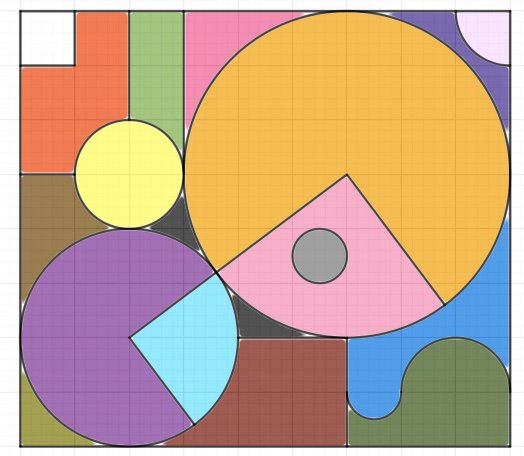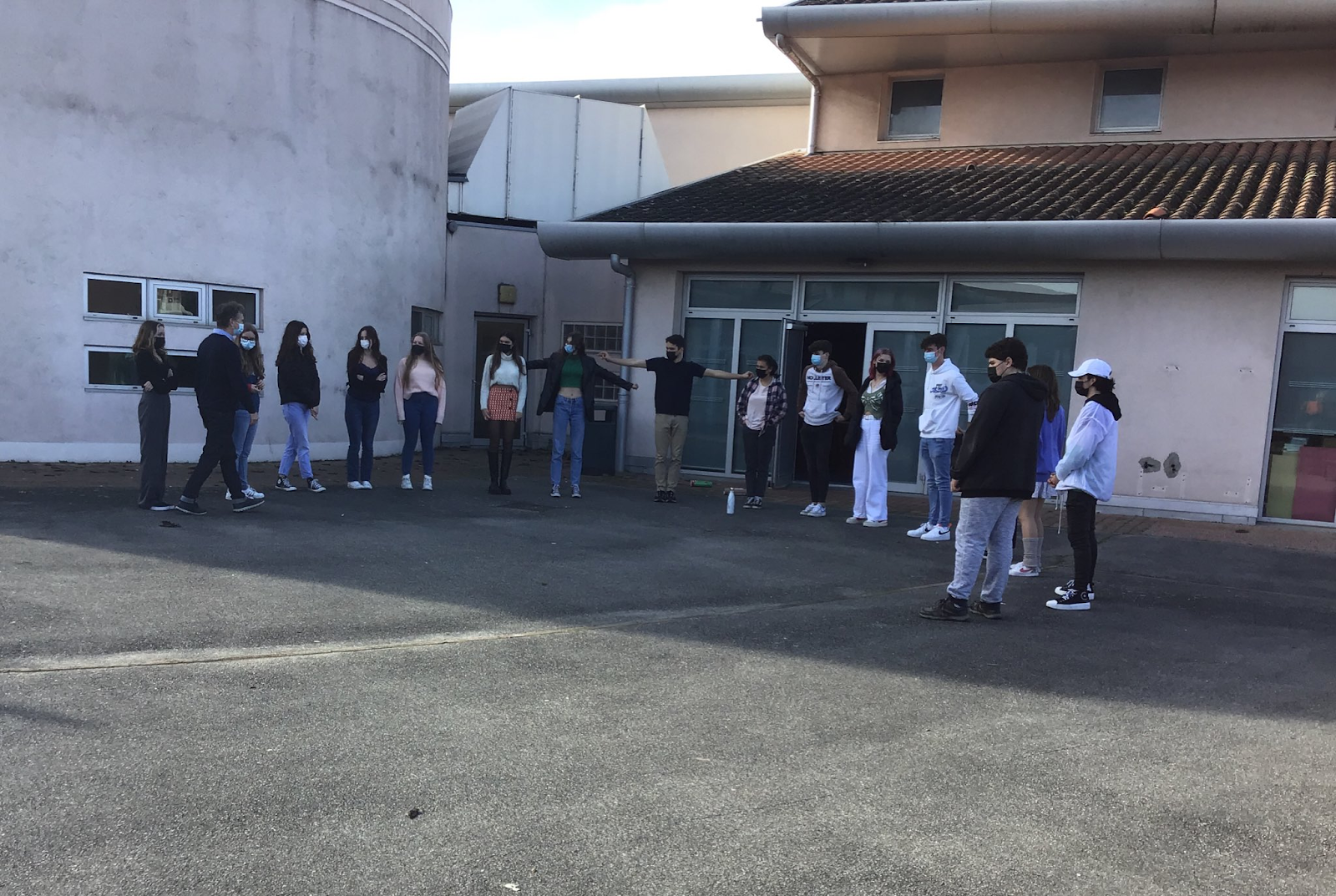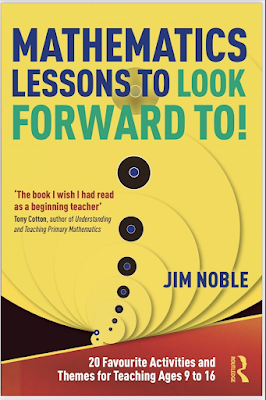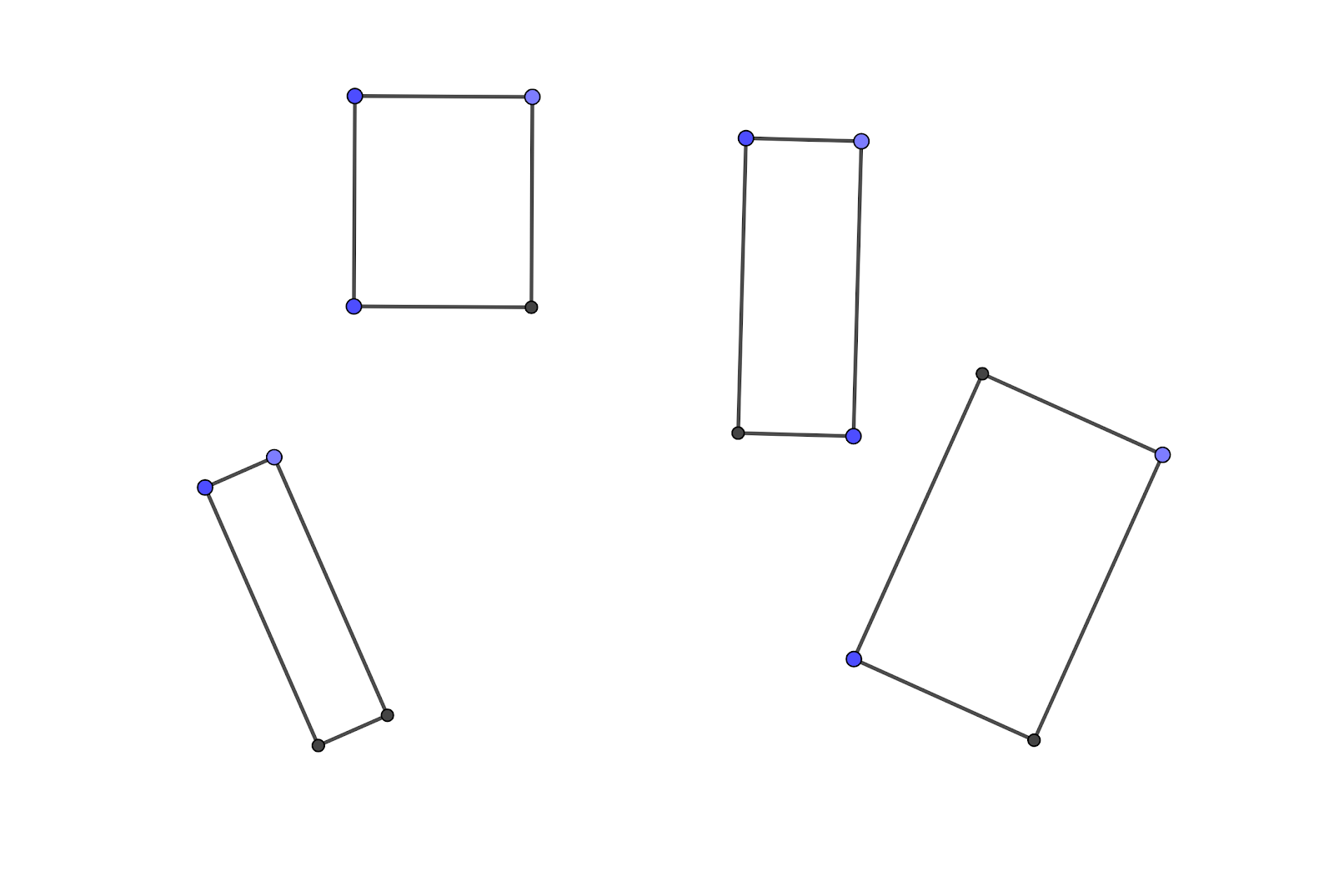Jim's book is out!
Jim Noble is my friend and colleague in secondary. His classroom just a few metres from our Early Years playground, no doubt he's had to shut his door many times because of the racket we're making! I see him out there too.
'If the world were a hundred people...'
Human Loci: Creating a parabola
These are part of two of the lessons described in Jim's
Mathematics Lessons to Look Forward To! The book details twenty lessons that Jim returns to, experiments with, hones and polishes.
"Every time I revisit a topic for myself or in preparation for teaching or mostly during teaching, I always notice something I haven’t seen before and this is often pointed out by a student."
Jim is a great storyteller. He's often called on to be the one who puts important rites of passage in the life of the school into words: leaving speeches, introducing speakers and celebrations. He's always assured, natural, entertaining and considered in what he says.
This book is the same. And Jim is letting us into the heart of his teaching here, there's a vulnerability, at times, a touch of self-doubt or self-mockery. In the process, he takes us back to what makes the lessons tick for him, why they became exciting and vital.
"Deep down I have convinced myself that the roots of ideas are an important part of them. I think the journey from first idea to activity is a really enjoyable, reflective part of the job."
His lessons are not always outdoors of course, but they are all out of the routine, they all stand out as being alive, practical where possible... experiences as well as lessons. And fun.
"It is fun. I have made no apology about this. I have found that I need this as much as students do. Something that adds variety to the global experience, something practical that gets students out of their seats and sometimes out of the classroom and something that makes us laugh a little is always welcome."
Reading a draft of the book, I was struck again by how we have so much in common in our outlook towards lessons. Is it that we've spent a lot of time together since 2004 when Jim came to the International School of Toulouse?
It's not just that we both photograph drain covers for their mathematical patterns, both enjoy seeing and making Islamic geometrical patterns, both value Seymore Pappert's seminal book Mindstorms...
Many - most! - of his twenty lessons do actually have their counterpart in the primary school.
We've both enjoyed 'Numbersearch' and these feature in the book:
If the white triangle is 1, what other numbers can you see?
Jim got pi involved:

If the white square is one...
Like Jim in secondary, I love to get my primary students coding the path of a robot using Scratch:
“If I need to turn 5 equal turns that make a total of 360 then I need to turn 72 degrees”, which generalises to “for an n sided regular polygon, the turning angle is 360/n”. The thrill of making this conclusion is the same thrill as solving a puzzle. The word ‘discovery’ is much maligned and probably inappropriate as it implies a kind of wandering around until you find something then pick it up. This is much more mathematical in nature. You have a problem that needs solving, you have knowledge of the scenario at the ready and you put bits of this knowledge together to deduce new knowledge. Now that is doing mathematics.
Or using dynamic geometry:
How would you construct this rectangle? The others? I really do recommend having a go here. It is really interesting to focus on the different ways it can be done and there are some surprising challenges hidden away in there.
In this activity, the constructed dynamic rectangle is, in a sense, every rectangle. Students get to explore the notion that each construction has a degree of freedom that is entirely defined by the elements that were used to construct it and the order in which they were used. It is a profound mathematical idea that goes beyond geometry into set theory and the anatomy of a variable. In many ways it is a much more natural way to see mathematics that a set of static images might be and really helps get our heads around the idea of generalisation. “Many things here can vary, but the following will always be true”
Jim asks the reader to have a go at parts the activities. Some of them I tried. I had a go for instance at constructing a rectangle four different ways using Geogebra. Each one has a different 'skeleton', the way it's constructed.
(I've come to the conclusion there's an infinite way of constructing a rectangle that can be stretched into any rectangle and these skeletons don't have to involve parallel sides, or perpendicular sides either.)
There is really no other book like this! Jim takes each lesson from his treasure chest of pedagogical subject knowledge and turns it every way in the light for us. Which different ways could the lesson go? How does it relate to key ideas in mathematics? How does it relate to our understanding of what it means to know? How does it engage students? What connections are there with other subjects?
Jim showing piles of rice to Helen and Mike
You can tell I'm recommending it!
Great teacher, great book!
The lesson chapters:
1 - What’s in the box
2 - Cones
3 - If the world was a village of 100 people
4 - Goodness Gracious Great Piles of Rice
5 - How do I love thee, let me count the ways
6 - Number Searches
7 - Human Loci
8 - Statistics telling stories
9 - Match Point
10 - Prime Pictures
11 - Population Growth
12 - Starting from scratch
13 - Indestructible
14 - Dancing Quadratics
15 - Hot Wheels
16 - Maxbox
17 - Dancing Vectors
18 - Pleasure at the Fairground
19 - Impossible Diagrams
20 - Cubism













